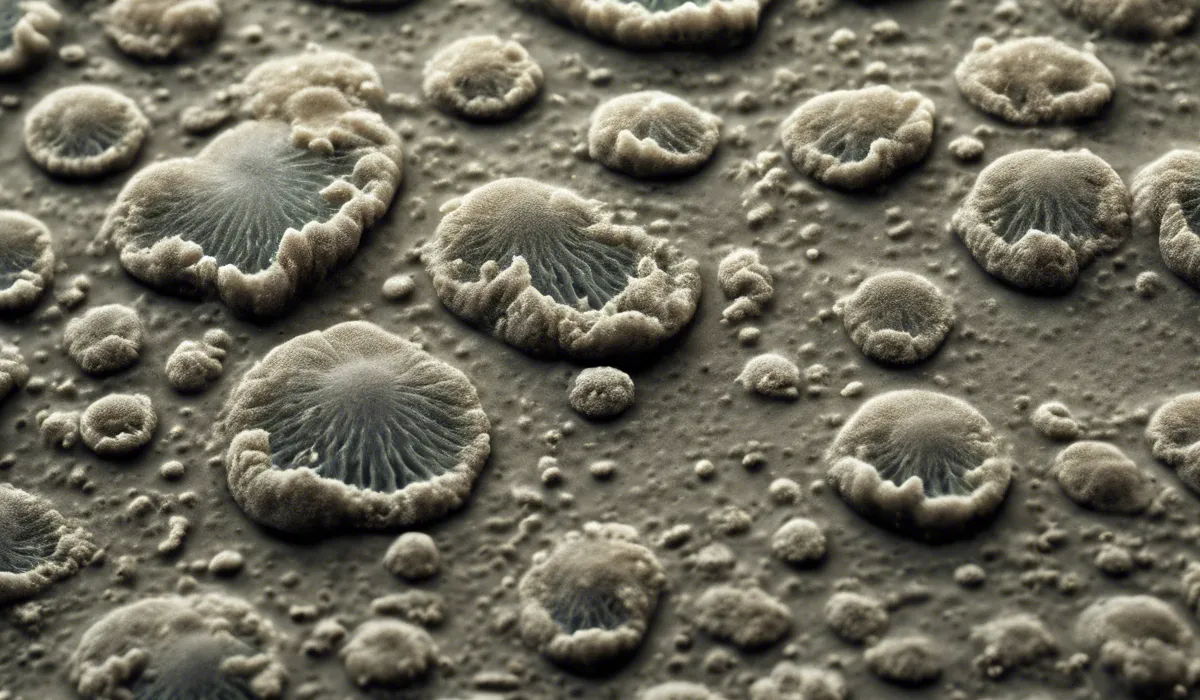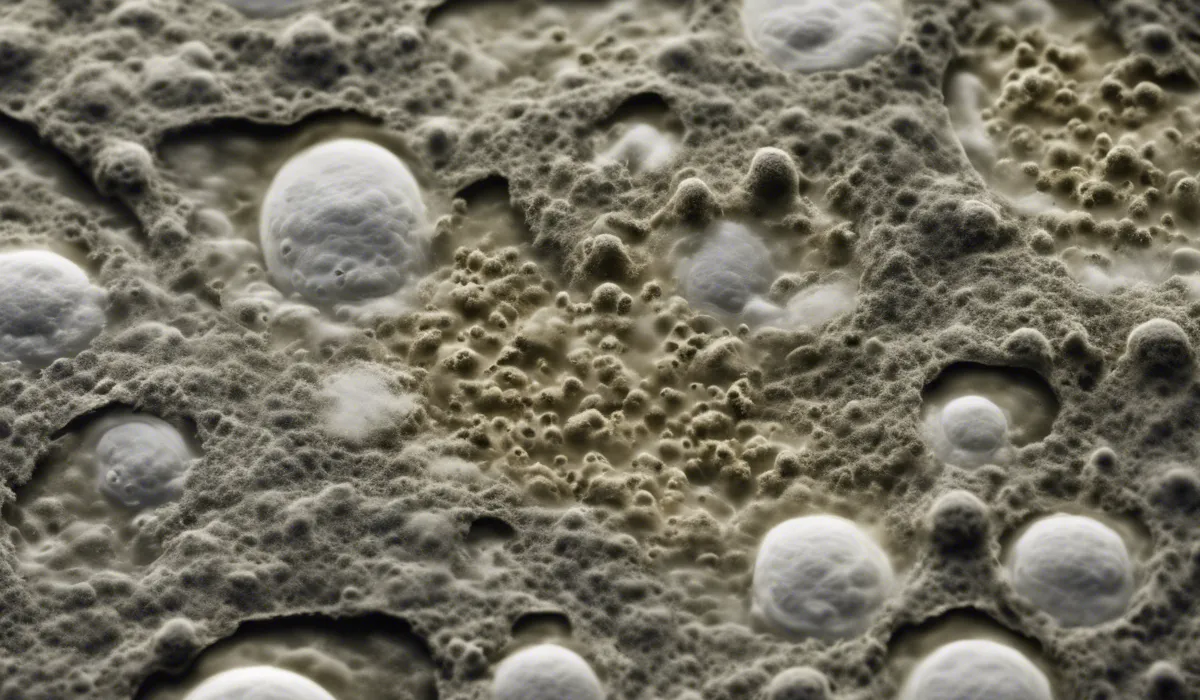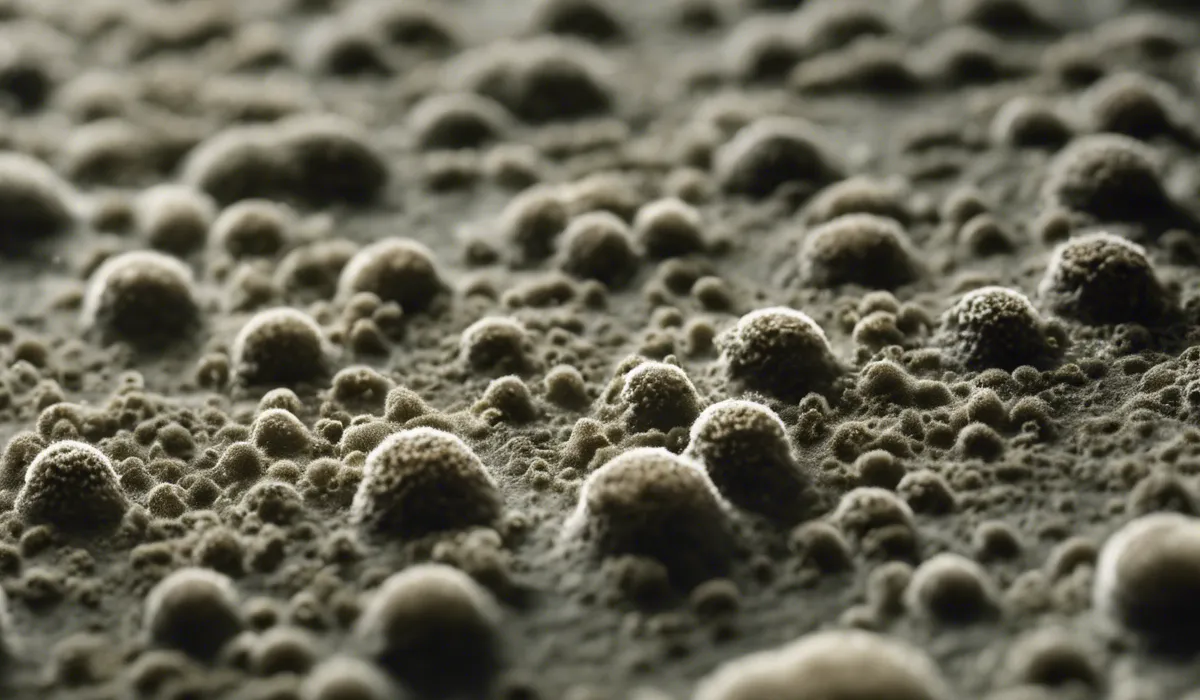Yes, mold spores are ubiquitous in both indoor and outdoor environments. They are microscopic and float in the air, making them prevalent virtually everywhere. However, they require moisture to grow, so they are not active in all settings.
Ubiquity of Mold Spores in the Environment

What Are Mold Spores?
Mold spores are tiny particles that are part of the life cycle of fungi. They are so small you cannot see them without a microscope.
Mold uses these spores to reproduce and spread. When the conditions are right, like when there is enough moisture, mold spores can grow into new mold colonies.
Imagine them as seeds that can start new plants, but in this case, they start new molds.
Natural Habitats for Mold Spores
Mold spores love damp, warm, and dark places. Outdoors, they are common in soil, on plants, and in decaying matter like leaves.
They help nature by breaking down dead materials. Mold spores are a natural part of the air we breathe outside.
Common Indoor Places for Mold Spores
Inside, mold spores can be found where there is moisture. This includes bathrooms, kitchens, and basements.
They can settle on surfaces and wait for the right conditions to grow. Places like shower curtains, sink areas, and laundry rooms are where you might find them often.
Increased Spore Distribution Factors
Things like flooding, leaks, or high humidity can spread mold spores more. Using a humidifier too much or drying clothes indoors can also add moisture to the air.
This makes it easier for mold spores to grow. Opening windows can let in more spores from outside, too.
Seasonal Mold Spore Changes
Mold spore levels can change with the seasons. They are often higher in the summer when it is warm and humid.
In the fall, when leaves decay, mold spores can also be more common. During the winter, indoor spore levels might rise because houses are closed up and there is less airflow.
Health Implications of Mold Spores

Exposure to Mold Spores and Health
Being around mold spores can cause sneezing, coughing, and itchy eyes for some people.
These are signs of an allergic reaction. For those with asthma, mold can make their symptoms worse. It is important to keep the air clean to help everyone breathe easier.
Long-term Health Risks
Living with mold for a long time can lead to more serious problems. Some molds can produce toxins, and these can be harmful, especially if someone has a weak immune system. It is best to deal with mold quickly to keep everyone safe.
Vulnerable Groups and Mold Sensitivity
Older people, children, and those with allergies or asthma can be more sensitive to mold. They may get sick more easily from being around mold spores.
Keeping mold out of homes and schools is very important for protecting these groups.
Mold Spores and Indoor Air Quality
Mold spores can make indoor air quality worse. If there is a lot of mold in a building, the air can be unhealthy to breathe.
This is why it is a good idea to keep the air clean and free of mold spores as much as possible.
Prevention and Control of Mold Spores

Reducing Indoor Mold Spore Levels
You can keep mold spores away by cleaning regularly and fixing leaks fast. Using an air purifier can help, too.
It is also smart to throw away things that are too moldy to clean, like old carpets or ceiling tiles.
Controlling Humidity and Moisture
Keeping your home dry is key to preventing mold. Use fans in bathrooms and kitchens to get rid of steam.
A dehumidifier can also help, especially in damp places like basements. Try to keep humidity levels below 50% if you can.
Cleaning and Maintenance Against Mold
Clean often, especially in places where mold likes to grow. Use products that can kill mold.
Check your home for signs of mold regularly and take care of any issues right away. This can stop mold from spreading and getting worse.
When to Call the Pros?
If you have a big mold problem, it might be time to call in professionals. They know how to safely remove mold and can fix things so that mold won’t come back.
This can give you peace of mind that your home is a healthy place to be.
Long-term Mold Prevention Strategies
Think about the future to keep mold away. Use paint that resists mold in damp rooms. Make sure your home has good airflow. And, be careful with plants indoors, as they can add moisture to the air.
By planning ahead, you can make your space safer and more comfortable for everyone.
FAQs About Mold Spores Presence
Are mold spores present in all environments?
Yes, mold spores are present in both indoor and outdoor environments because they are microscopic and can float in the air, but they are not necessarily active in all settings due to varying moisture levels.
Can mold spores be found indoors at all times?
Mold spores can be found indoors as they are ubiquitous, but their growth and activity depend on the presence of moisture.
Are there any environments where mold spores are absent?
Mold spores are nearly everywhere, but they may not be present in significant quantities in extremely dry or sterile environments.
Do mold spores indicate poor indoor air quality?
The presence of mold spores alone does not necessarily indicate poor indoor air quality; it is the growth of mold that can impact air quality and health.
How can the presence of mold spores be controlled indoors?
Controlling indoor humidity levels and promptly addressing water leaks are critical steps in reducing the presence and growth of mold spores indoors.
Final Thoughts
Mold spores are indeed a common presence in both indoor and outdoor environments due to their microscopic size and ability to float through the air.
While they are found nearly everywhere, their growth is contingent upon the availability of moisture, which means they are not always actively growing in all environments.
